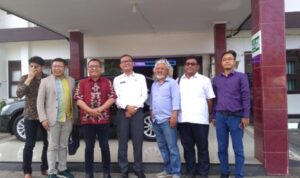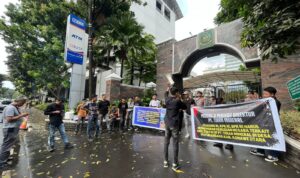Change management procedures for operational software are implemented. Difficult to define requirements at the beginning and difficult to change at a later stage. Learners are advised to conduct additional research to ensure that courses and other credentials pursued meet their personal, professional, and financial goals. It may also be helpful to choose your first software language to learn. Languages like C# and Java are still in demand by employers, but many new languages are emerging, too.
Software development life cycle (SDLC) is the term used in the software industry to describe the process for creating a new software product. Software developers use this as a guide to ensure software is produced with the lowest cost and highest possible quality in the shortest amount of time. The project manager is the overall control agent for a strong SDLC process. In traditional software development, security testing was a separate process from the software development lifecycle (SDLC). The security team discovered security flaws only after they had built the software.
How can DevSecOps be integrated into SDLC?
All phases of the systems development life cycle need to occur for the success of the app and satisfaction of its users. During the development phase, the project moves into the production environment, where the specifications detailed in the design document are brought to life in code. If the prior steps of the process have been well-documented, the development phase should be straightforward. It then creates the software through the stages of analysis, planning, design, development, testing, and deployment. By anticipating costly mistakes like failing to ask the end-user or client for feedback, SLDC can eliminate redundant rework and after-the-fact fixes.
- The final stage of the software development life cycle is maintenance and operations.
- Before your developers can move onto the development stage of the process, you must first address system design.
- The security team discovered security flaws only after they had built the software.
- Some companies see so much value in the model that it is used for other projects, including non-technical projects and activities.
- SDLC methodologies fit within a flexibility spectrum ranging from agile to iterative to sequential.
- Also, make sure you have proper guidelines in place about the code style and practices.
- If, at the end of the planning phase, your organization realizes the feasibility is dubious, don’t be afraid to walk away and rethink your system development project.
The value of having thorough design and SRS documents is that it simplifies the development stage. The less time spent developing the right solution, the sooner your business can deploy it. Several pitfalls can turn an SDLC implementation into more of a roadblock to development than a tool that helps us. Failure to take into account the needs of customers and all users and stakeholders can result in a poor understanding of the system requirements at the outset.
Waterfall Model
The systems development life cycle (SDLC, also called the software development life cycle or simply the system life cycle) is a system development model. SDLC is used across the IT industry, but SDLC focuses on security when used in context of the exam. Think of “our” SDLC as the secure systems development life cycle; the security is implied.
Once the system development project has been deemed feasible, the next step is to analyze the available information and define the system’s requirements. The end product of the analysis phase will be a Software Requirement Specification (SRS) document. The longer your business pursues an infeasible project, the more money and resources will be wasted. If, at the end of the planning phase, your organization realizes the feasibility is dubious, don’t be afraid to walk away and rethink your system development project. Conversely, Agile is a popular approach for organizations that want to create a continuous delivery environment. It’s centered around iterative development, short development cycles, gathering feedback and adapting to new requirements.
The Ultimate Guide to Understanding and Using a System Development Life Cycle
Phase 3 of the systems development life cycle describes the desired features and operations of the system. The objective of the systems design phase is to transform all requirements into detailed specifications covering all aspects of the system. Finally, approval to progress to the development phase must be granted to complete the systems design phase. A key methodology in the creation of software and applications is the systems development life cycle (SDLC). The systems development life cycle is a term used in systems engineering, information systems, and software engineering to describe a process for planning, creating, testing, and deploying an information system. This post will explain the broad steps of the systems development life cycle and a few of the most popular SDLC models development teams use to create a new system.

Systems Analysis & Design (SAD) is a process during which specific information systems are developed that effectively support hardware, software, or people. Some methodologies offer specific outlines to go through this process to prevent costly mistakes or to speed up development. However, all methods are aimed at moving systems through the various relevant phases. It’s hard to single out one stage that is the most important since all seven are fundamentally interconnected and each stage feeds into the next one. The SDLC model cannot function without one of its core elements because it will lead to poor-quality software, low customer satisfaction, and a loss of money.
Benefits of SDLC (System Development Life Cycle)
This phase identifies whether the system meets the initial requirements and objectives. The objective of the evaluation phase of the systems development life cycle is to deploy the system and train the system end users. Phase 6 of the initial development state of the systems development life cycle puts the software into production and runs as needed.
During this phase of the System Development Life Cycle, the requirements and desired functions are described in great detail, including process charts, rules, and other documentation. By adding new steps, developers could define clearer and more effective actions to reach certain goals. In the greater context of management information systems or MIS, SDLC helps managers to design, develop, test, and deploy information embedded system definition systems to meet target goals. Theoretically, this model helps teams to address small issues as they arise rather than missing them until later, more complex stages of a project. But in theory, it illuminates the shortcomings of the main waterfall model by preventing larger bugs from spiraling out of control. The information system will be integrated into its environment and eventually installed.
Iterative Model
Regression Testing – verifies that software that was previously developed and tested still performs correctly after it was changed or interfaced with other software. Unit Testing – takes individual units of software source code and tests them to determine whether they are fit for use. Requirements Gathering – provides alternative means to illustrate, explain, and specify exactly what must be delivered to meet business goals. Human Factors Feasibility – determines whether the system is relevant and can be managed by the end user. However, it may not be ideal for projects with evolving requirements or fast-changing markets. In addition, project issues in the development phase can lead the project to run over budget.

Structured Analysis and Design Technique (SADT) – helps people describe and understand systems through a diagrammatic notation. SADT can be used as a functional analysis tool of a given process, using successive levels of detail. If this was the case, deployment and implementation should go smoothly. If your team didn’t thoroughly detail integration standards and deployment procedures, going live with the system could cause issues for your organization. Developers create a version very quickly and for relatively little cost, then test and improve it through rapid and successive versions. One big disadvantage here is that it can eat up resources fast if left unchecked.
Quality management and System Development Life Cycle
Many organizations overlook the importance of this phase and fail to properly prepare the necessary resources for it. At this point in the process, all aspects of the project will be designed, including system interfaces, user interfaces, databases, and network configurations. Designers must ensure that all requirements detailed in the SRS document are met. Before your developers can move onto the development stage of the process, you must first address system design. The design phase transforms the information in the SRS document into a logical structure.
Many organizations subdivide their SDLC methodologies into a larger number of phases than the five referenced in NIST guidance, potentially offering closer alignment of SDLC phases and corresponding RMF tasks. The document sets expectations and defines common goals that aid in project planning. The team estimates costs, creates a schedule, and has a detailed plan to achieve their goals. After training, systems engineers and developers transition the system to its production environment.
As soon as the testing stage is over, it’s high time to integrate the information system into the environment, install it, and present the outcome to the end user. “Let’s start using what we’ve got.” This step includes feedback from end users. Depending on their feedback, the developers need to make changes and adjustments.









Komentar